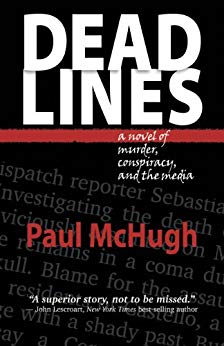California North Coast Series: A Kayak Adventure
By Paul McHugh, Outdoors Writer
September 14
A half-day spent performing any sport is a bit much. You’d need to have true aficion – to use a Hemingway term – to play at it much longer than that. And I must say, hitting a total of more than nine hours of holding the same posture in a kayak cockpit while making stroke after stroke with your paddle would task the composure of any Zen master.
Our day began auspiciously enough, when we awakened in the calm shelter of College Cove, packed up in leisurely fashion, then paddled around Trinidad Head. We landed on another calm and protected beach, and proceeded to snarf up a full-on, carbo-load, total pig-out breakfast at the Seascape Restaurant, an aptly named and locally owned joint perched just above that beach. We were even joined by Chronicle photographer Michael Maloney, who had borrowed an old plastic whitewater kayak to paddle out a short way with us to snap a few additional shots from sea level.
Bloated on eggs, waffles, sausages and whatnot, we next wedged ourselves into our kayak cockpits, and re-launched at the hugely indulgent hour of 11 a.m. But, see, we only planned to paddle 7.5 miles on that day, crossing the bar of the Mad River and finding a campsite just inside its estuary.
Man proposes, God disposes – as my old religion teachers used to intone.
Big, Bad Breakers on the Mad River Bar
Once we were out and away from the shelter of Trinidad Head, we found that Poseidon was intent on landing another aquatic artillery barrage on another set of sandbars. According to my handheld weather radio, the day’s swell had supposedly dropped off, it now was only coming in four feet high at an interval of fifteen seconds. Yet it still produced a mighty thunder and rows of foam in a series of breaks at the mouth of the Mad. I studied the pattern they made, and announced that I’d determined a safe way in that could be won by zigging a series of surf rides back and forth.
My companions reacted to my proposal with utter scorn. Yeah, they said, but they’d listened to the same radio broadcast I had. They reminded me: waves and wind both were soon due to jump back up. It was all very well to get in over the bar today, but what about getting back out tomorrow? Waves any bigger than these, shoved by strong winds, would steepen fast, and be strong enough to pitch-pole our boats (smack them over end-for-end) when we attempted to paddle back out. This would not only scatter us and our gear in a maritime yard sale, the impacts could dislocate shoulders and so forth.
Forced into a Marathon
I admitted their remarks held both force and logic. However, I dreaded what our only alternative had to be: making a very late start on a paddle of 28 total miles down the coast and in to shelter at the Port of Eureka inside Humboldt Bay.
However it was our best option. Therefore, we had to do it.
I remember very little of our long approach to Humboldt, just the mind-numbing boredom of seeking for interminable hours to close in on and pass the great steaming stacks of the mill near the beach at Samoa. But I do recall entering the jetty-lined channel just as dark fell, surfing the swells that humped up and swept in at our sterns, and feeling a jolt of pleasure at discovering that we also were riding a flood tide into the Bay – without planning for that eventuality at all. It was just one of those moments when good fortune happened to befall us.
The Risks of Darkness
But we still needed to keep from getting run over by other traffic in the dark. I remember jury-rigging for safe night paddling amid this harbor’s boats and ships by sticking a white diver’s flashlight under the straps of my deck bag, while John Weed turned a red headlamp backwards on his hat. And then I vaguely recall following the lit screen of my mapping GPS to the east shore of Woodley Island, clambering out on the docks at 8 p.m., and barely having enough amperes of energy to pitch my tent and drag out my sleeping gear. Falling asleep that night was one of the easy moves I’ve ever made in my life.











